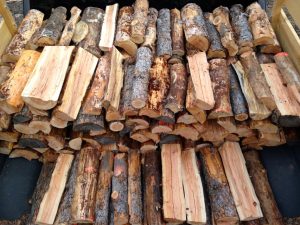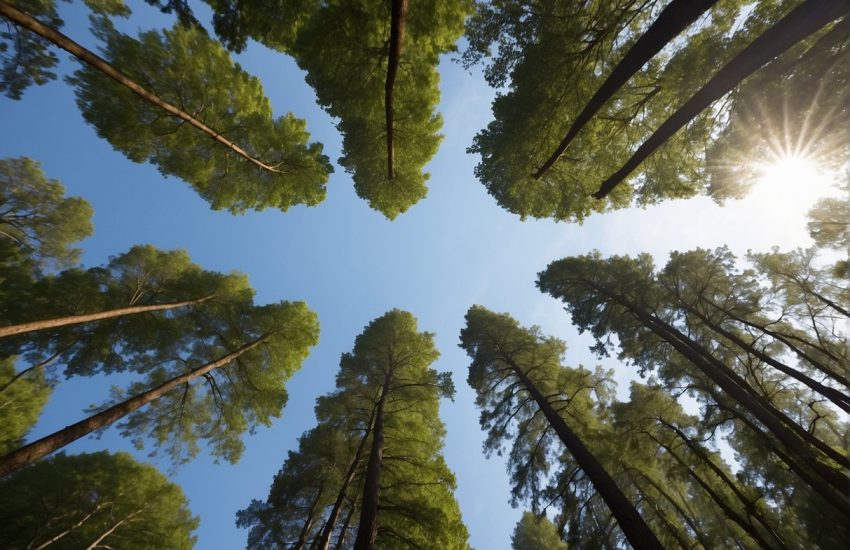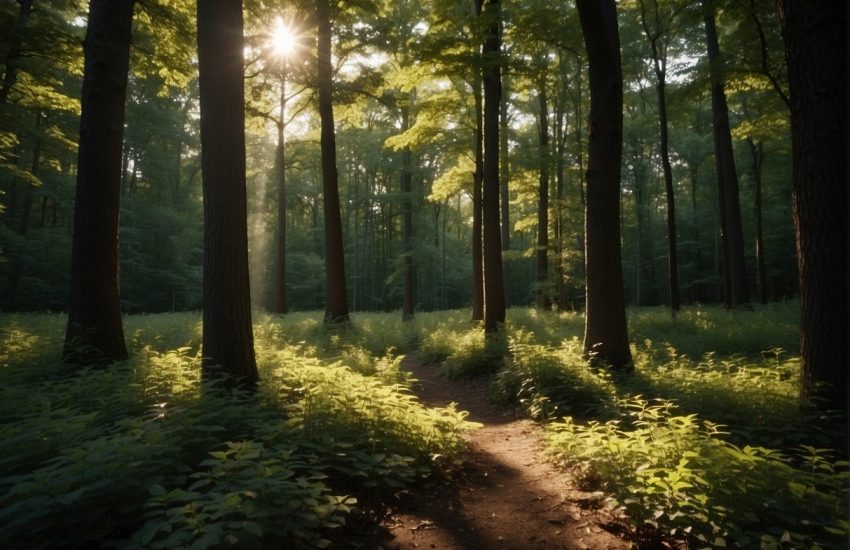Do Pine Trees Produce Good Firewood?
Are you planning to get your fireplace ready for winter? Before you run out to the nearest store that sells firewood, ensure you’re buying what works for you. There are many species of trees, and each offers different burn and smoke rates, but you need to know which species is best for your fireplace. Here are some important questions to ask yourself to find out if pine is good firewood and useful for burning.

Burning Pine Wood
Before you burn pine as firewood you need to consider the following.
Heat Output and Efficiency (in BTUs)
The amount of heat produced by burning a piece of wood is measured in British thermal units (BTU). A cord is a unit of measurement that describes how much wood can be stacked together to form a pile four feet high, four feet wide, and eight feet long. So when someone says they have 1 million BTU per cord, that means the wood has enough heat potential per cord to produce 1 million BTUs when burned.
Pinewood does not burn at a high heat output, and it is not efficient. A cord of pine wood will burn at 14.3 to 17.1 million BTUs. Pine also burns fast, which makes it a poor choice for heating your home during cold winter months.
How Does Pine Wood Smell When Burning?
When you burn pine wood in your fireplace or wood stove, you’ll notice a sweet and pleasant smell as it burns. This is because pine contains an oil called pinene, which is released into the air as the wood burns. Pinene has antimicrobial properties that help prevent mold growth on the walls of your fireplace or stove as well as on its surrounding surfaces.
Creosote Buildup
Creosote buildup is a common problem with wood stoves and fireplaces. Creosote is mainly created from burning sappy woods like pine. It can cause your fireplace to smell and emit smoke, which is unhealthy for you and your home.
Creosote buildup occurs when incompletely burned gases are allowed to condense on the insides of your chimney flue. The gases come from the incomplete combustion of fuel in the firebox when there is not enough oxygen present to complete the burning process. This happens when there is not enough air moving through the chimney, or if there is too much moisture in the air coming out of the firebox or both.
Creosote buildup on wood stoves and fireplace flues can be very dangerous because it can catch fire and cause an explosion inside your home. Also, if left unchecked, creosote deposits may cause health problems such as chronic bronchitis or asthma attacks in people who breathe them in over time.
Amount of Smoke Spark Production When Burning Pine Wood
Pinewood produces a lot of smoke compared to other types of wood. However, the amount of smoke produced when burning pine is dependent upon the grade of pine being burned, how dry the piece of lumber is, and how much oxygen it has access to. The more oxygen there is around your pine, the less smoke will be produced; however, if there isn’t enough oxygen present or if you burn pieces of lumber that aren’t dry enough, then more smoke will be released into your home environment.
Coal Production
Pine is not a good source of coal. This is because it contains mostly cellulose, and cellulose does not contain any hydrogen or carbon atoms. It is an organic compound that consists of long chains of glucose molecules, and these chains need to be broken down before they can be used as fuel.
However, pine can be used as fuel indirectly. For example, you could use the wood from trees like pine to produce charcoal which you can then use to make charcoal briquettes for your barbecue grill. This would allow you to use the wood from pine trees as a fuel source indirectly rather than directly.
How Long To Season Pine Firewood
Seasoning wood is the process of allowing wood to dry out before it is used for fuel. Seasoning firewood allows for the natural splitting and straightening of the lumber, as well as removing some of its impurities. This helps make it burn more efficiently, making less smoke and producing more heat per unit weight than green or unseasoned wood.
Pine typically takes about three months to season under ideal conditions. However, if you are covering your pile with a tarp, you will need to add a few months onto this time frame as pine needs as much airflow as possible during the drying period. In addition, if you are stacking your pile on dirt instead of concrete or gravel, then you will need to factor in extra time for water drainage at the bottom of your stack. By stacking your pine in this manner, you can maintain a uniform moisture content throughout the entire stack while still allowing enough airflow between each piece of lumber so that they don’t mold together during this process.
Is Pine Firewood Expensive
Pine firewood is considerably cheap compared to other types of wood. The price varies depending on the type of pine you choose and whether you buy it in bulk or by the piece.
A cubic meter of pine firewood is approximately $150 to $500, depending on the type of pine and where you live. Most people buy a half cord at a time, which is stacked into a pile roughly 4 feet high and 8 feet wide.
In addition to the cost per cubic meter or half cord, you’ll have to pay for delivery if you don’t pick up your order yourself. Delivery can add anywhere from $100 to $250 to your bill, depending on where you live and how far away from home your wood needs to be delivered.
Pros and Cons of Using Pine for Firewood
Before you get pine for your firewood, you will need to know the pros and cons of burning pine firewood this include.
Pros
- Easy to start
Pine is easy to start because it’s usually dry when you buy it from a store or get it delivered from a delivery service. All you need is some kindling and newspaper, and you’ll be able to get your fire started quickly.
- Pine makes great kindling
Pine makes great kindling because it splits easily into long pieces that burn for a long time compared to other types of wood like oak or hickory. When burning pine, remember that you’ll need more fuel than other types of wood because they burn so quickly.
- Good smell
Pine smells good — at least compared to some other types of wood — and you’ll enjoy this pleasant aroma while you’re burning your fire.
Cons
- Sap and Resins
The biggest con to using pine for firewood is the sap. The pine trees are full of resins that coat everything around them, including the wood. This makes it difficult to stack and store without getting it all over your hands, arms, and face.
- Cracking and popping
The other big con of pine is that it can crack and pop quite a bit when burning. This is especially true in colder climates where the sap has a chance to freeze within the wood itself.
How Pine Firewood Compares to Other Trees
Pine firewood is considered one of the most popular types of wood that people use for heating and cooking due to its availability and low price. However, pine is actually not as high in BTUs as other types of wood. When it comes to burning, pine is almost at the bottom in BTU per cord. Pine burns at 14 million BTUs per cord, while eucalyptus burns at 34.5 million BTUs per cord. Osage-Orange burns at 32.9 million BTUs per cord, while Ohio Buckeye burns at 12.1 million BTUs per cord. Linden Basswood burns at 13.8 million BTUs per cord, but this tree only grows in certain areas of the country and is hard to find.
Pine is okay firewood, but it’s probably not the best. You definitely shouldn’t ever burn pine if you have the option of burning something else. If you have no other options, then go ahead and burn it. Pine firewood usually has an affordable price tag because it is readily available. Pine is easy to split and can start a fire quickly. It burns with a pleasant aroma but with less heat output.


